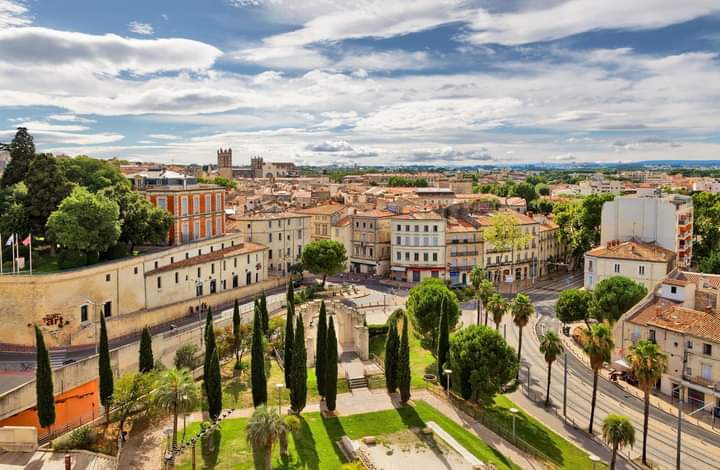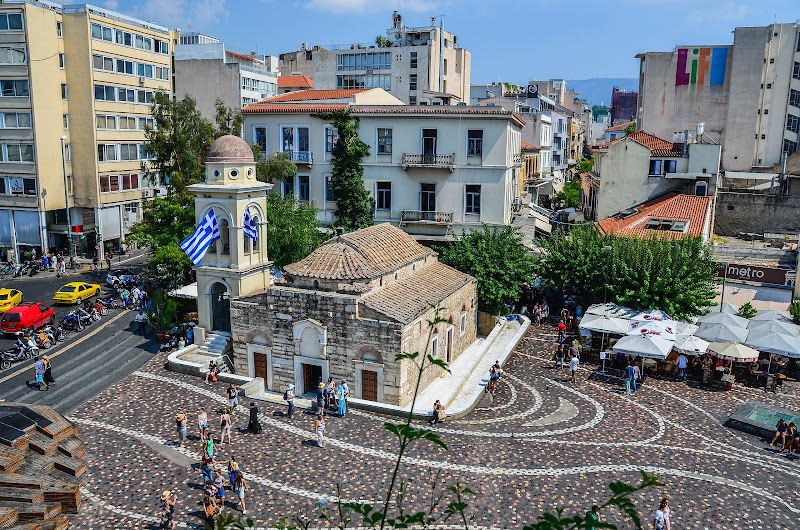Welcome to Languedoc-Roussillon
With over 3 million acres of vineyards, Languedoc-Roussillon is the largest wine-growing region in the world. Dotted with ancient cathedrals, breathtaking natural parks, and sun-drenched Mediterranean beaches, this French region offers an unforgettable blend of history and natural beauty. Prepare to be enchanted by the allure of Carcassonne's medieval fortifications, the serenity of the Cévennes National Park, and the vibrant colors of the Camargue's wildlife.
Before embarking on your adventure, consider using a detailed tourist map as your guide. This invaluable tool will help you navigate the region's winding roads, revealing hidden gems and must-see sights along the way. Let the map be your compass, leading you through the rich tapestry of landscapes and cultural treasures that make up Languedoc-Roussillon.
Booking.comUnveiling the Charm of Languedoc-Roussillon
The enchanting region of Languedoc-Roussillon is a cornucopia of diverse experiences, from breathtaking landscapes to historical wonders. To fully immerse yourself in the beauty of this region, we have curated a list of top attractions you must not miss. Let's embark on an unforgettable journey through the heart of southern France.
1. The Vibrant City of Montpellier
Montpellier, a city that expertly blends history and modernity, is a must-visit destination in Languedoc-Roussillon. This city, known for its vibrant student population, is steeped in history and boasts a dynamic cultural scene. A walk through the medieval lanes will lead you to the fabulous Place de la Comédie, the city's central square, and a hub of lively cafés and shops. Be sure to visit the Musée Fabre, a fine arts museum hosting an impressive collection of European art.
2. The Mystical Aigues-Mortes
If you're a history buff, Aigues-Mortes will captivate you with its well-preserved medieval walls and the history of the Crusaders. Once a bustling port, it's now a charming town with a maze of narrow streets lined with boutiques and restaurants. For a panoramic view of the Camargue, climb the Tower of Constance, a former prison for Protestants during the Wars of Religion.
3. The Majestic Pont du Gard
As you journey through Languedoc-Roussillon, the Pont du Gard stands as a testament to the architectural prowess of the Romans. This 2000-year-old aqueduct is one of the best-preserved Roman structures in the world. Its impressive arches spanning the Gardon River are an awe-inspiring sight, particularly at sunset when they are beautifully illuminated.
4. The Serene Banyuls-sur-Mer
For a taste of the Mediterranean, head to Banyuls-sur-Mer. With its picturesque beaches, crystal-clear waters, and renowned vineyards, this town offers a quintessential Mediterranean experience. Visit the Maillol Museum, dedicated to the sculptor Aristide Maillol, born in the town, or simply relax on the beach with a bottle of the local sweet wine, Banyuls.
5. The Colorful Sète
Known as the 'Venice of Languedoc', Sète is a vibrant port town crisscrossed by canals and famous for its colorful homes and bustling seafood markets. A visit to the town isn't complete without a boat tour along the canals, where you can appreciate the unique architecture and enjoy fresh seafood from local vendors. Don't forget to check out the tourist map of France to plan your visit to this lively town.
Savoring the Essence of Languedoc-Roussillon
Traveling through Languedoc-Roussillon isn't just about visiting places; it's about immersing yourself in the region's rich culture, history, and natural beauty. From ancient Roman structures to vibrant cities, serene Mediterranean towns to bustling markets, this region offers a slice of everything that makes southern France enchanting. So, pack your bags and set out to explore the many wonders of Languedoc-Roussillon.

Practical Information for Visiting Languedoc-Roussillon
Transportation and Mobility
When exploring Languedoc-Roussillon, you'll find that public transportation is efficient, reliable, and well-connected. The region is served by a network of trains and buses that connect the main cities and many of the smaller towns. If you're planning to stay in one of the larger cities like Montpellier or Nîmes, you can rely on city buses and trams for local travel. However, if you're eager to explore the countryside and smaller villages, renting a car might be the best option.
Schedules and Prices
The standard operating hours for major attractions vary depending on the season. Most sites open around 9 AM and close around 6 PM, though hours may be extended during the busy summer months. Entry fees for most attractions range from €5 to €15, with discounts available for students, seniors, and families. As for transportation, a single bus or tram ticket in Montpellier costs €1.60, while a day pass is €4. If you choose to rent a car, expect to pay around €30-€40 per day.
Safety Tips
Languedoc-Roussillon is generally a safe region to visit, but it's always wise to take basic precautions to secure your belongings. Avoid carrying large amounts of cash, keep your valuables out of sight, and be aware of your surroundings in crowded places. When driving, keep in mind that roads in rural areas can be narrow and winding, so exercise caution, especially at night.
Practical Recommendations
The best time to visit Languedoc-Roussillon is in the late spring or early autumn when the weather is comfortably warm and the tourist crowds are smaller. Remember, this region is known for its sunny weather, so bring sunscreen and a hat to protect yourself from the sun. If you're planning to visit the vineyards, be sure to book in advance, especially during the harvest season in September and October.

Frequently Asked Questions about Languedoc-Roussillon
Even after reading through our comprehensive guide, you may still have some specific questions about your trip to Languedoc-Roussillon. We've compiled a list of the most frequently asked questions that delve into some unique aspects of this captivating region.
1. Is Languedoc-Roussillon suitable for a family holiday?
Languedoc-Roussillon is an excellent choice for a family holiday with its blend of historical sites, outdoor activities, and family-friendly beaches. The region offers a host of interactive museums and attractions like the Dinosaur Park in Mèze, which will captivate the young and the young at heart. Always remember, however, to keep an eye on the little ones when at the beach as the Mediterranean can sometimes be unpredictable.
2. Are there any unique regional dishes I should try in Languedoc-Roussillon?
Indulge in the rich culinary heritage of Languedoc-Roussillon, which is a gastronomic delight. Don't miss the chance to try local dishes like the hearty cassoulet, a slow-cooked casserole containing meat and white beans, or bourride, a fish stew typical of Sète. And for dessert, savor some crème catalane, a local variant of the crème brûlée.
3. What are the options for active tourism in Languedoc-Roussillon?
Languedoc-Roussillon offers a wide array of outdoor adventures, making it a paradise for active travelers. The region is crisscrossed by hiking and cycling trails, including the challenging route through the Cévennes National Park. Water sports such as sailing, windsurfing, and kayaking are popular along the coast. In the Pyrenees, you'll find great spots for rock climbing and canyoning.
4. Are there any local festivals or events in Languedoc-Roussillon?
The region of Languedoc-Roussillon celebrates several traditional festivals and events that add color to your visit. One of the most famous is the Feria de Nîmes, a Spanish-style festival with bullfighting, music, and dancing. There's also the Festival de Carcassonne, a summer festival of music, theatre, and dance held within the medieval fortress. Be sure to check the local calendars as these events can sometimes cause closures or disruptions to regular schedules.
5. What are some eco-friendly travel tips for visiting Languedoc-Roussillon?
Practicing sustainable tourism in Languedoc-Roussillon is all about respecting the region's natural and cultural heritage. Opt for local and public transportation where possible, stay in eco-friendly accommodations, and support local businesses by dining at local restaurants and purchasing souvenirs from local artisans. Remember to leave no trace in natural areas, sticking to marked trails and not leaving any rubbish behind.
6. Can I take a wine-tasting tour in Languedoc-Roussillon?
Yes, Languedoc-Roussillon is a major wine-growing region, and wine enthusiasts can explore numerous vineyards and wineries. Be sure to visit areas like Corbières and Minervois for a taste of the region's robust red wines. Wine-tasting tours are a fantastic way to learn about the wine-making process and to sample a range of wines under the guidance of knowledgeable experts.








